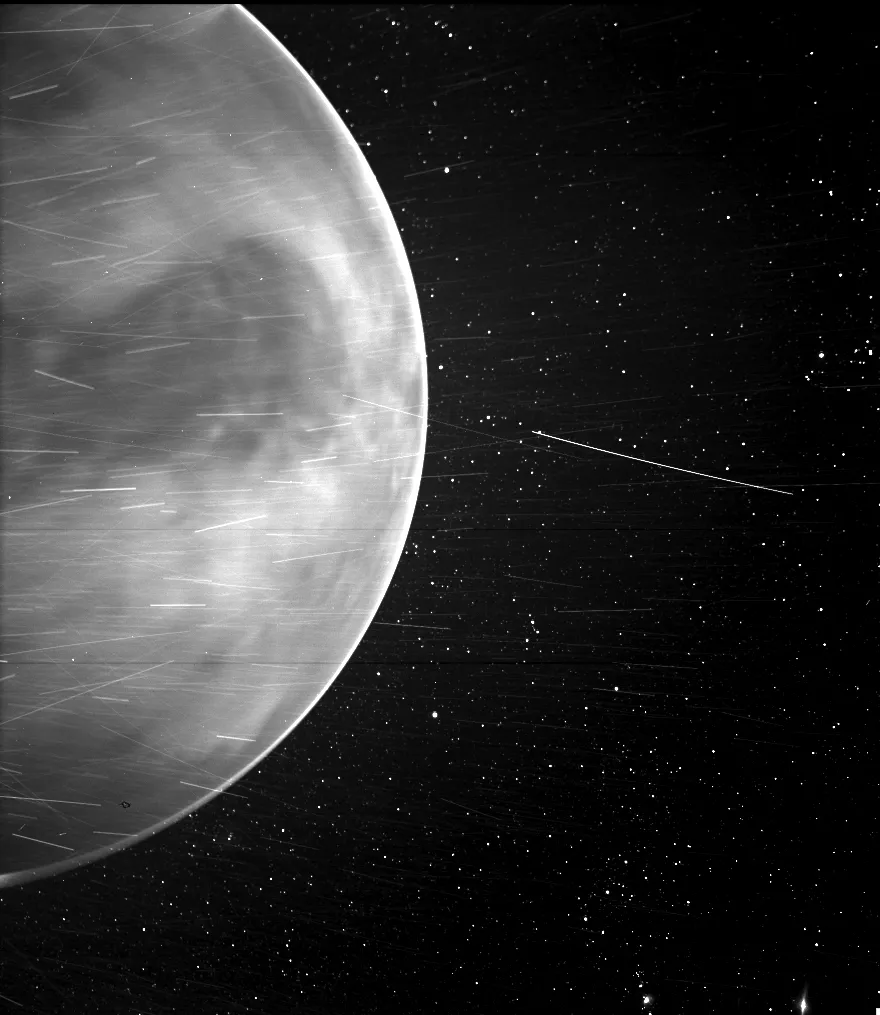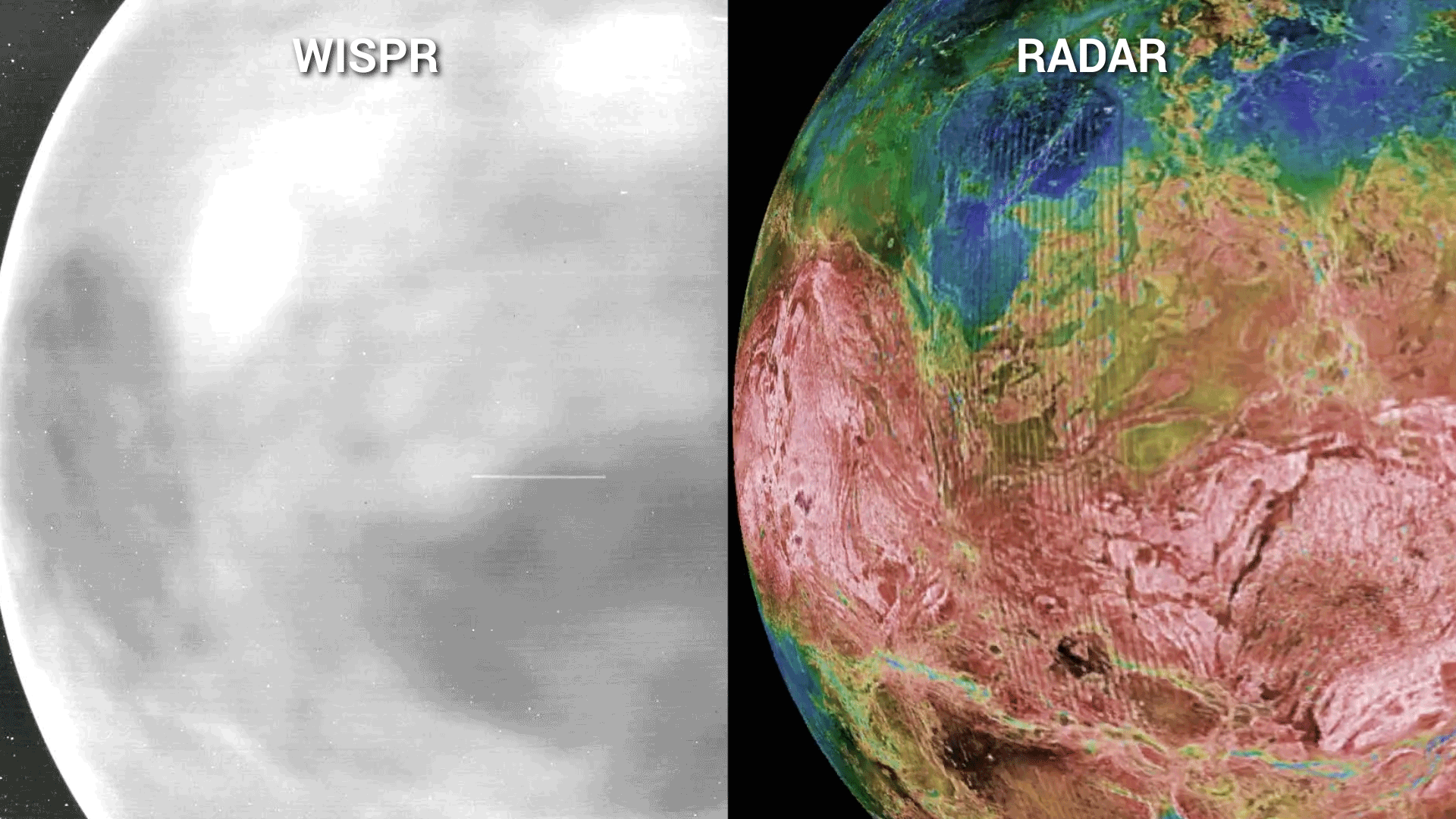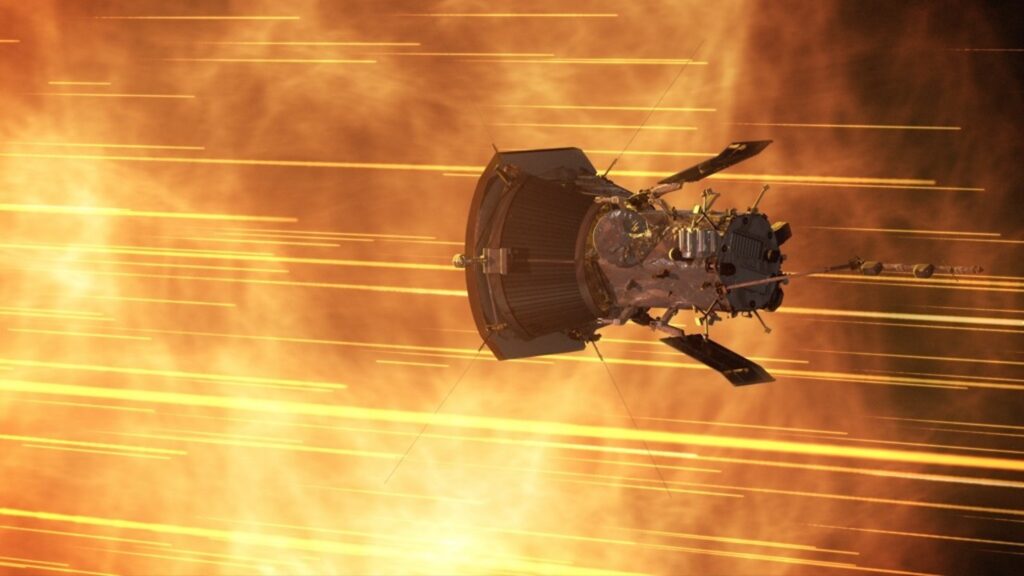On November 6, the Parker Solar Probe (PSP) will perform its final maneuver in the vicinity of Venus. This will allow it to enter its final orbit and break its own record, becoming the closest spacecraft to the Sun in history.
Mystery of the Venus’ surface
PSP was launched in 2018. It is designed to study the upper layer of the solar atmosphere, called corona, and the processes taking place there. To achieve this goal, NASA specialists built the orbit of the probe in such a way that during the passage of the perihelion, the probe behaved as if “diving” inside the corona, after which it transmitted information to Earth.

In the course of its mission, the PSP gradually shortens its distance from the Sun. This is achieved by performing a series of gravitational maneuvers near Venus. They make it possible to reduce the perihelion of the probe’s orbit.
During one of these Venus flybys, which took place on July 11, 2020, PSP targeted Venus with the WISPR instrument. It’s designed to study the solar wind — but scientists hoped the device would be able to see changes in the planet’s thick cloud cover. The resulting pictures brought a surprise. It appears that WISPR is able to capture the glow of Venus’ hot surface, which emits radiation at the cross between the visible and near-infrared ranges. In other words, it can see through its clouds.
The images of Venus obtained by PSP agree well with data from the Magellan spacecraft: they show dark and light areas that correspond to the areas captured during radar imaging of its surface in 1990 – 1994. However, some parts of the WISPR images look brighter than expected. So far, scientists are not sure what the cause of such differences is. Perhaps it’s all about different soil chemistry or the fact that these areas are covered by fresher lava flows.

Therefore, mission specialists are highly awaiting PSP’s upcoming visit to Venus, during which the probe will fly over both a number of similar and different landforms. The data it obtained may help to understand the differences in their structure.
Record close approach to the Sun
The Venus flyby will not only reveal some of its mysteries, but also help set a new record. The second planet’s gravity would reduce the perihelion of PSP’s orbit to only 6.2 million km. By comparison, Mercury never approaches the Sun closer than 46 million km.

At this distance, the vehicle’s heat shield will heat up to 1,500 °C. The PSP will race through plumes of plasma still connected to the Sun. It will be close enough to pass inside the solar ejection, like a surfer diving under a crashing ocean wave.
PSP will pass its next perihelion on December 24, 2024. At that point, it will be in fully autonomous mode. Engineers will have to wait until December 27, when the PSP is expected to send a signal to confirm successful completion of the approach.
The probe will remain in this orbit until the end of its mission. Formally, it is designed until the middle of 2025. But if the probe is in good technical condition, NASA will likely extend it.
Provided by NASA


